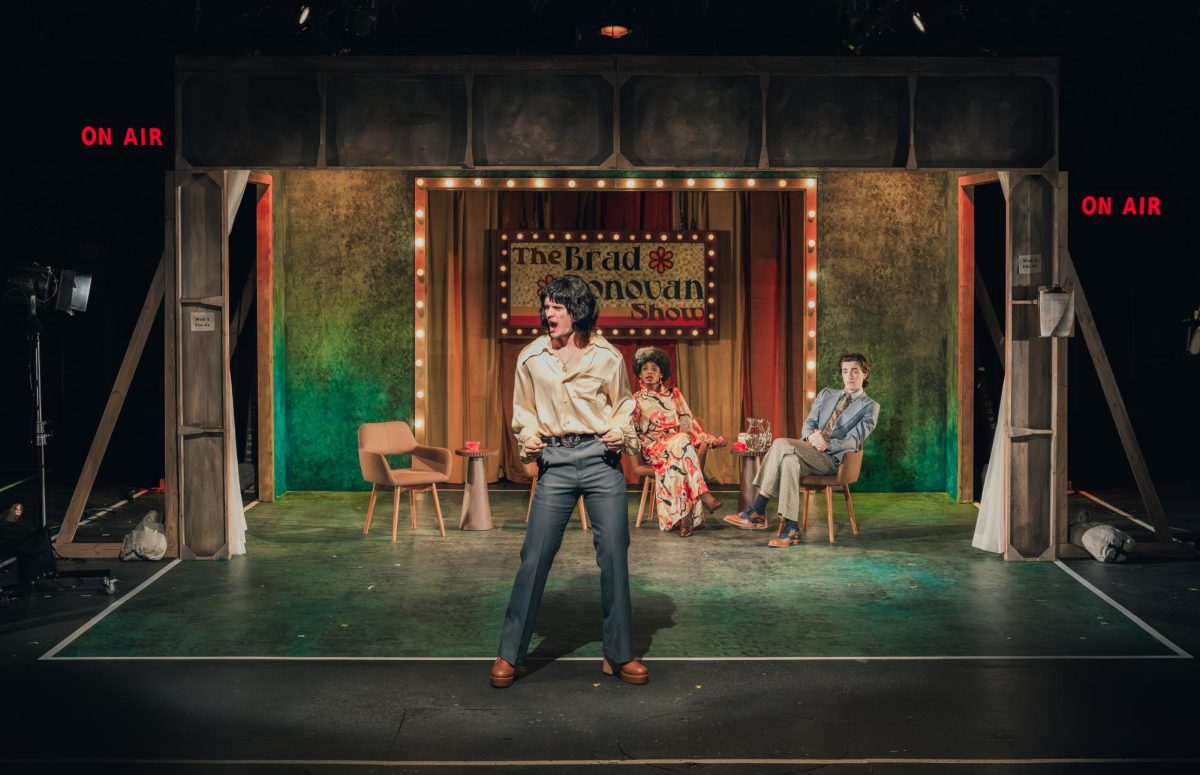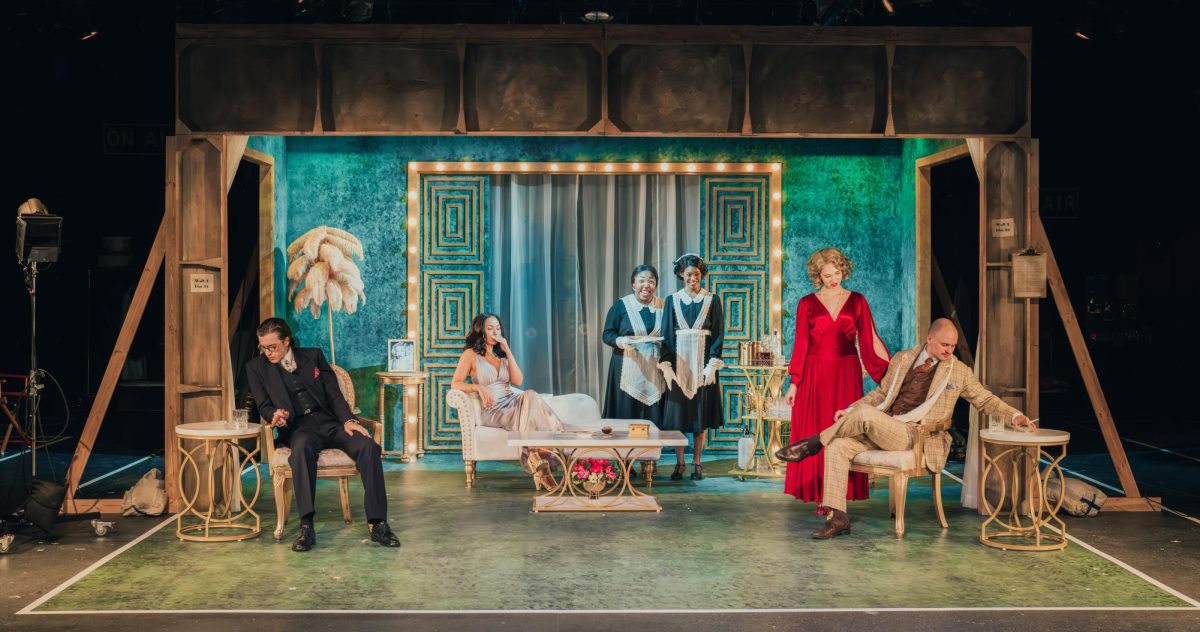From Oct. 9 to 17, seven young actors hit the Pope Auditorium stage in “By The Way, Meet Vera Stark,” a play that follows the story of an aspiring Black actress as she navigates the intricate racial stereotypes of 1930s Hollywood. Directed by Adrienne C. Williams, this play encapsulates the realities many Black women were subjected to when trying to build a career.
Williams, who has been directing plays since the early 2000s, brought over 30 years of acting experience and intimate knowledge of the drama world. She said that the show’s themes remain current, despite its period setting.
“I definitely think it’s a great show to do in a school that has a BFA program because really, those are questions that will come up over these actors’ careers as well,” Williams said. “It does speak to literally the world that they’re going to walk out into.”
One particular scene that encapsulated the central theme of the play was the last scene of Act 1, where Gloria is hosting a very well-known director at her house. He arrogantly rambles about wanting to create a “thoroughly authentic” film depicting the experience of enslaved people with “real people, not actors.” When he declares this desire, both Vera and Lottie, one of Vera’s roommates, start shifting their posture in hopes of landing roles in the film. This scene highlighted how Black women were forced to conform to white men’s stereotypes of them in order to succeed in their careers. The audience spent the intermission wondering what would happen to Vera and how centering her identity around other people’s ideals would ultimately affect her.
“It’s not always often that characters — especially Black characters — are written with so much dimension. So it was a big honor to play her.” Arden Carethers, FCLC ’26
These were complex topics to bring to life, especially with only four and a half weeks to rehearse. The cast rehearsed four hours a day, five days a week. It was Williams’ first time working with Fordham’s Theatre department, an experience she described as very positive.
“The process is always particular to the team that you’re working with, so I really enjoyed it,” Williams said.
Arden Carethers, Fordham College at Lincoln Center (FCLC) ’26, played Vera, and said that her favorite part of the process was getting to do the protagonist justice.
“(Vera) gets to be angry, and she gets to be frustrated and driven, but also, she gets to be in love and excited,” Carethers said. “It’s not always often that characters — especially Black characters — are written with so much dimension. So it was a big honor to play her.”
“The truth of the matter is the choices you make and the things you decide upon — you might get that gold, but also, you might lose the silver.” Nalin Reed, FCLC ’28
Carethers noted that Vera is based on a combination of Black actresses from the 1930s, with Teresa Harris serving as the main inspiration for the character. She said playing Vera was “very rewarding, but very scary.”
“It’s a big thing to take on a story that is supposed to represent the community almost through a singular woman and the people around her. So it was frightening, and at the same time, that was the entire reason that I wanted to go on this journey,” Carethers said.
Developing Vera’s voice was a particular challenge for Carethers. With the help of a vocal coach, who gave her lots of old video footage to study, she learned to hone her cadence and tone to match the eras of the story. She paid special attention to external factors that would affect how Vera sounded, like a years-long smoking habit. Later in the show, when Carethers portrayed Vera as an older woman, she spoke more bluntly. She explained that “it seemed like by the time that (Vera) got to that age, nothing mattered: She said what she said.” This intentional shift in tone reflected the weight of the character’s experiences.
Carethers, who does not frequently act in musical theater productions, also noted that singing in the show was something she had to get comfortable with. She credited her fellow cast members for helping her develop her musicality and said that she intends on continuing to explore the skill.
Other cast members faced unique challenges, such as Nalin Reed, FCLC ’28, who played Leroy in Act 1 and Herb in Act 2. Reed said that developing the characters differed from his usual process.
“This role probably stretched me the most because the dynamics between both characters, Leroy and Herb, are so vastly different,” Reed said. “Whenever I build a character, I start with the walk, and then I go into the psychology. However, this time, I think there was so much on the page … that both characters just manifested.”
Reed, along with other cast and crew members, said Williams’ leadership was invaluable. Reed described a major lesson that he and the cast members learned throughout the process.
“Something our director said to us the first day of the process is everything costs something,” Reed said. “The truth of the matter is the choices you make and the things you decide upon — you might get that gold, but also, you might lose the silver.”

Reed continued to highlight how the lessons he learned from Williams shaped his perception of the meaning of the play.
“Vera made a choice to go after her dream with the options that she had … because we also have remembered that we were in 1933, back when we didn’t have a lot of options,” he said. “We can judge the decision that she made; however, we weren’t present in the room when the options were laid on the table.”
Reed was not the only production member who said they learned something from Williams. Assistant director Elise Benson, FCLC ’26, said that learning from Williams was the “most rewarding part of the process.”
“Hearing random stories of anecdotes from her every day about her career as both an actress and director was amazing. She really ushered me towards what it means to be a great collaborator,” Benson said.
“It is a show that will broaden people’s horizons about the realities of Hollywood in the 1930’s and how that has affected Hollywood as a whole currently.” Jackie Kimbrough, FCLC ’28
While the cast members had just over a month of rehearsal, the production team had been working on this piece since the summer. One of the production managers, Jackie Kimbrough, FCLC ’28, said they were proud to see all of their hard work pay off.
“It was very rewarding to see the process finally come together with all of the technical elements,” Kimbrough said. They also emphasized the importance for audience members to have seen this production.
“It is a show that will broaden people’s horizons about the realities of Hollywood in the 1930’s and how that has affected Hollywood as a whole currently,” Kimborough said.
When asked what she wanted audience members to take away from this production, Williams said that “it would be nice if people went out and talked about the way we treat each other,” highlighting her hope for the play’s message to extend far beyond the stage.
“By The Way, Meet Vera Stark” closed on Oct. 17 in the Pope Auditorium.

